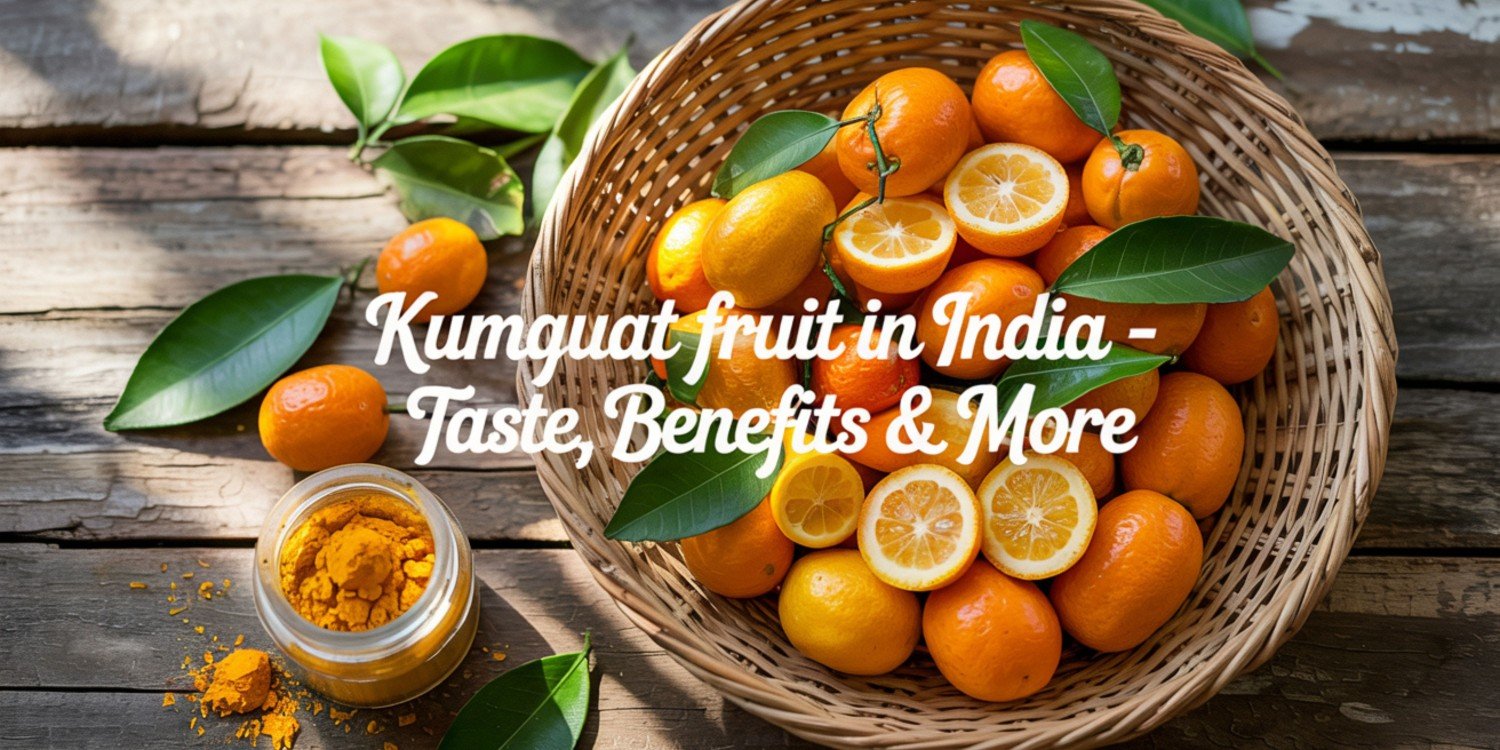

Dt. Natasha Mohan
Dietitian Natasha Mohan is one of the most influential and renowned nutritionist and dietitian, with over 3 Million Followers on YouTube and 200+ Million Views and with 10+ Years of Experience. Dietitian Natasha Mohan is a transformation expert, Motivational Speaker and Lifestyle Expert. She has touched million of lives. She specializes in Therapeutic Diets Like, PCOS/PCOD, Thyroid, Diabetes, Cholesterol, Blood pressure, and other lifestyle disorder.
Table of Contents
Kumquat Fruit in India: Benefits, Uses, Taste & Availability
Kumquat Fruit in India is gaining attention for its zesty flavor, nutritional richness, and health-boosting properties. While this tiny citrus fruit has long been popular in East Asia and parts of the Mediterranean, its unique blend of sweetness and tartness is now winning hearts across Indian households and organic farms.
What is Kumquat Fruit?
Kumquats (Citrus japonica) are small, oval citrus fruits typically about the size of an olive. Unlike oranges or lemons, kumquats are eaten whole—including their thin, sweet rind and tangy pulp. They pack a punch of vitamin C, antioxidants, and essential oils, making them a healthy and refreshing snack option.
Benefits of Kumquat Fruit in India
With rising awareness about natural and organic produce, the Kumquat Fruit in India is being appreciated for its many health benefits:
1. Immunity Booster
Kumquats are rich in vitamin C and antioxidants, which help strengthen the immune system. Regular consumption can reduce the risk of infections and support overall well-being.
2. Good for Digestion
The fiber content in kumquats helps regulate bowel movements, improve gut health, and relieve constipation—perfect for the modern Indian diet that sometimes lacks adequate fiber.
3. Weight Management
Low in calories and high in fiber, kumquats help keep you full longer. They’re an excellent choice for those looking to manage weight without compromising on nutrition.
4. Improves Skin Health
The antioxidants in kumquats combat free radicals, reducing signs of aging and promoting healthy, glowing skin.
5. Regulates Blood Sugar
With a low glycemic index, kumquats help control blood sugar levels and are suitable for diabetic diets when consumed in moderation.
Uses of Kumquat Fruit in India
As more Indians explore global fruits, the versatility of kumquats is being welcomed in home kitchens and gourmet recipes alike.
Fresh Eating: Pop them whole into your mouth as a quick, tangy snack.
Jams and Marmalades: Their natural acidity balances perfectly with sugar, making them ideal for spreads.
Pickles: Just like lemons, kumquats can be pickled with Indian spices for a spicy-sour treat.
Salads & Cocktails: Sliced kumquats add a burst of flavor to salads and drinks.
Baking: Their zest and juice are used in cakes, muffins, and tarts for a citrusy twist.
Taste Profile
Kumquats offer a unique taste experience. The outer peel is surprisingly sweet, while the inside is tart and citrusy. This contrast makes them unlike any other citrus fruit. Their intense flavor makes them suitable for sweet and savory dishes alike, much loved by chefs and home cooks.
Availability of Kumquat Fruit in India
Although not native to India, kumquat cultivation is gradually spreading in regions with suitable climates like Himachal Pradesh, Uttarakhand, Sikkim, and parts of South India. You can also find fresh Kumquat Fruit in India in:
Organic Markets and Farmers’ Markets in metro cities like Delhi, Mumbai, Bangalore, and Pune.
Online Platforms such as BigBasket, Amazon, and Farm-to-Home delivery apps.
Specialty Stores or nurseries that sell exotic or imported fruits.
The season for kumquats typically runs from November to March, depending on the region.
Final Thoughts
The Kumquat Fruit in India is no longer a rare exotic treat—it’s a flavorful, healthy, and accessible fruit that can become a regular part of your diet. With its immune-boosting properties, versatile uses, and growing availability, it’s time to make space for this little citrus gem in your kitchen. Whether you’re a health enthusiast or a culinary explorer, kumquats can truly brighten up your plate and your palate. Pair it with nutrient-packed ideas like an oats smoothie recipe for weight loss to enhance your healthy eating journey.
You can find kumquats in organic markets, selected supermarkets, or order them online through platforms like BigBasket, Amazon, and niche farm-to-home services.
You eat kumquats whole—just rinse and pop them in your mouth! The skin is sweet while the inside is tangy, offering a balanced flavor.
Yes, kumquats have a low glycemic index and are rich in fiber, which can help regulate blood sugar levels. However, moderation is key.
Kumquats are typically seasonal and available from November to March, depending on the region and local farming cycles.
They boost immunity, aid digestion, improve skin health, regulate blood sugar, and help with weight management due to their rich nutrient profile.


